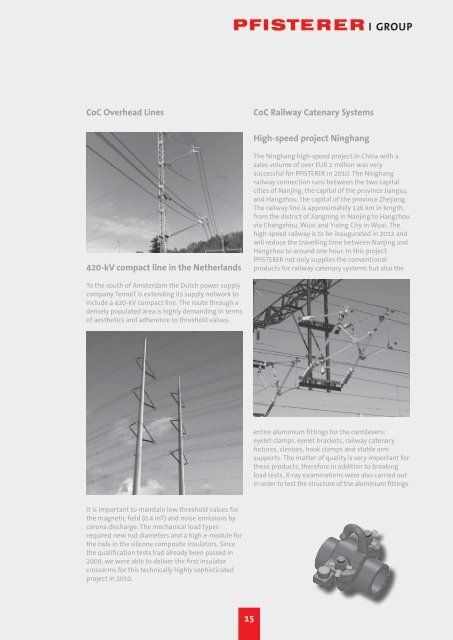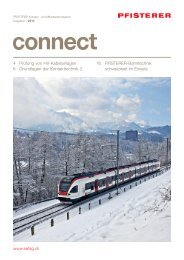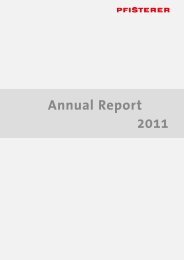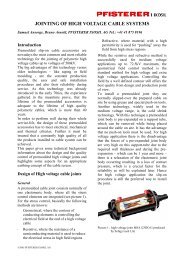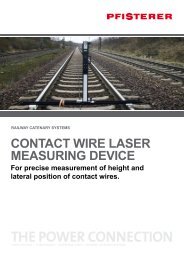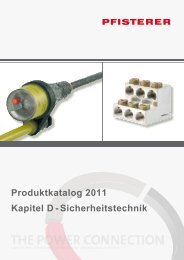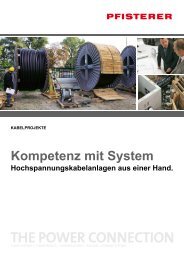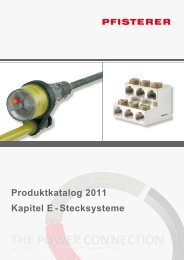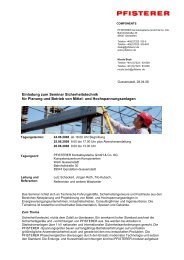Annual Report 2010 - Pfisterer
Annual Report 2010 - Pfisterer
Annual Report 2010 - Pfisterer
Create successful ePaper yourself
Turn your PDF publications into a flip-book with our unique Google optimized e-Paper software.
GROUP<br />
CoC Overhead Lines<br />
CoC Railway Catenary Systems<br />
High-speed project Ninghang<br />
420-kV compact line in the Netherlands<br />
The Ninghang high-speed project in China with a<br />
sales volume of over EUR 1 million was very<br />
successful for PFISTERER in <strong>2010</strong>. The Ninghang<br />
railway connection runs between the two capital<br />
cities of Nanjing, the capital of the province Jiangsu,<br />
and Hangzhou, the capital of the province Zhejiang.<br />
The railway line is approximately 136 km in length,<br />
from the district of Jiangning in Nanjing to Hangzhou<br />
via Changzhou, Wuxi and Yixing City in Wuxi. The<br />
high-speed railway is to be inaugurated in 2012 and<br />
will reduce the travelling time between Nanjing and<br />
Hangzhou to around one hour. In this project<br />
PFISTERER not only supplies the conventional<br />
products for railway catenary systems but also the<br />
To the south of Amsterdam the Dutch power supply<br />
company TenneT is extending its supply network to<br />
include a 420-kV compact line. The route through a<br />
densely populated area is highly demanding in terms<br />
of aesthetics and adherence to threshold values.<br />
entire aluminium fittings for the cantilevers:<br />
eyelet clamps, eyelet brackets, railway catenary<br />
fixtures, clevises, hook clamps and stable arm<br />
supports. The matter of quality is very important for<br />
these products, therefore in addition to breaking<br />
load tests, X-ray examinations were also carried out<br />
in order to test the structure of the aluminium fittings.<br />
It is important to maintain low threshold values for<br />
the magnetic field (0.4 mT) and noise emissions by<br />
corona discharge. The mechanical load types<br />
required new rod diameters and a high e-module for<br />
the rods in the silicone composite insulators. Since<br />
the qualification tests had already been passed in<br />
2009, we were able to deliver the first insulator<br />
crossarms for this technically highly sophisticated<br />
project in <strong>2010</strong>.<br />
15


